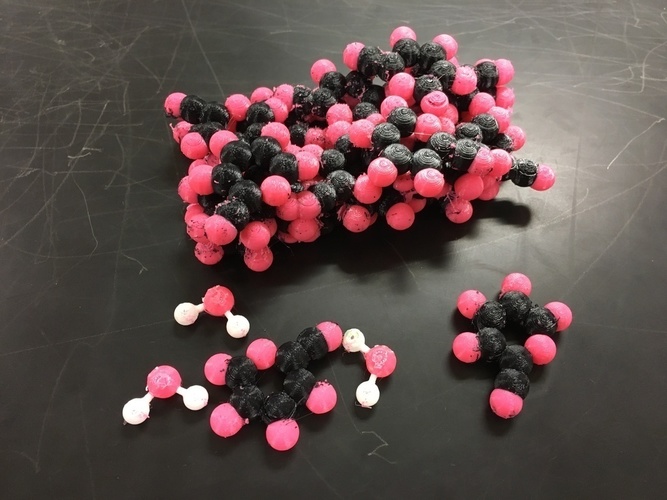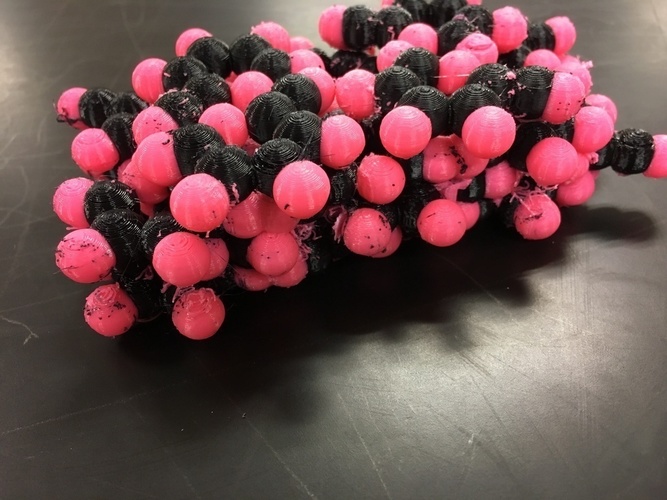

Prints (0)
-
No Prints Yet
Be the first to upload a Print for this Design!
Description
This model is designed to show how covalent compounds such as glucose dissolve in water. The carbon atoms (black), oxygen atoms (pink), and water molecules are all to scale. Separate molecules can be printed and placed on top of the molecule in the same repeating structure. Using the included water molecules, the process of dissolving a covalent compound can be shown by removing the individual molecules. Files are included to print the model on dual extruder printers (recommended) and single extruder printers. The glucose crystal file for a single extruder is too large for 123D to export as an STL so a single layer (which can be printed multiple times and glued together) is included.
Print Settings Printer: Flash Forge Creator Pro Rafts: Yes Supports: Yes Resolution: .2mm Infill: 15%
Standards
NGSS
CCSS
Overview and Background Often times I find that students struggle to understand the concept of solubility on the particle level. This model can be used to demonstrate how a molecular compound separates into molecules when dissolved. The model can also be used to do demonstrate the structure of covalent crystals. Students should be familiar with the differences between ionic and molecular compounds before using this model.
Objectives: Students will be able to describe the process by which a molecular compound dissolves in water. Students should be able to explain how water molecules interact with covalent compounds through intermolecular forces Students should be able to explain why certain substances can form crystal structures.
Lesson Plan and Activity Show students some glucose or sucrose and ask what will occur when the molecules are dropped in water. Discuss what occurs on the macro level (it dissolves) and then ask students to draw what they think will happen on the particle level. Show the model of glucose already setup with one or more layers of the individual molecule pieces on top. Pour some water on the model (by dropping the water molecules included in the set onto the model and knocking the individual molecules off of the crystal. This can then lead to discussions about how the water molecules are interacting with glucose molecules through hydrogen bonds, why the glucose molecules do not break apart, and about how the surface of the crystal must dissolve before the interior.
Materials Needed No other materials are needed besides the model kit, although a document camera may be helpful in demonstrating how the model works.
Comments